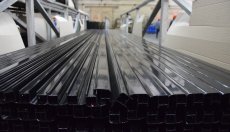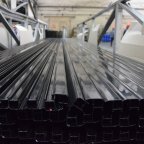
Data Science in Manufacturing
Over the last decade, data science turned out to find various applications in multiple industries. We can see data science being used in logistics, finance, customer service, healthcare, and many industries and sectors. Among all industries which benefited from AI we can also find manufacturing. And this is what we are going to talk about in this post.
In the last 100 years, we could observe manufacturing going through three major industrial revolutions. At the moment, we are at the fourth one (Industry 4.0). The main goal of the current revolution is to optimize production and achieve the goal of making the right quantity of products in the right time. In order to accomplish this goal, scientists use data from machines, products, and the environment. Why is it so crucial for manufacturing? The answer is simple: It is necessary to reduce manufacturing costs and reduce prices of products so that they are more affordable for everyone. How is it done, and what other benefits can the use of data bring to manufacturing companies?
Predictive analytics
Predictive analysis is an analysis of data your company owns to forecast and prevent the occurrence of problematic situations in advance. Issues related to overproduction, logistics, inventory management, and dead stock are things that most manufacturing companies struggle with. Predictive analysis can bring solutions to all of these problems. Therefore, let’s take a closer look at possible solutions.
Demand forecasting and inventory management
Forecasting demand is quite a complex process that involves analyzing huge amounts of data and massive amounts of work of accountants and specialists. It is also interdependent on inventory management as the supply chain data is necessary for demand forecasting activities.
Demand forecasting undoubtedly is highly beneficial for manufacturers. Thanks to it, companies can control inventory in a more efficient way. They can properly adjust quantities of stored products and reduce the need to store the useless ones. Moreover, this process positively influences relations between suppliers and manufacturers as efficient regulation of their stocks can improve the whole supply process.
Inventory management and demand forecasting need to consider many factors, including external ones such as the current situation of the economy and markets or raw material availability. Thanks to it, you can get a complex view of your business performance and plan future strategies better.
Fault prediction and prevention
These two prediction models aim to forecast the exact moment when the equipment will fail to perform the task. It allows secondary goals to be achieved–total prevention of such failures or reducing their number. When a manufacturing company has at hand the prediction that concerns future troubles, they can plan actions such as production break or shut down needed for dealing with the situation. Scheduled breaks are usually made in order to avoid bigger delays and more significant failures, which are usually the result of greater problems that could have been avoided in earlier stages.
Price optimization
There are numerous factors and criteria which may influence the final price of the product. These elements include costs of raw materials, production, and distribution costs. The price optimization process enables companies to set a price that will be adequate for both customers and manufacturers. Modern price optimization tools analyze and aggregate data from internal and external sources alike, such as data about competition.
Based on this analysis, it is possible to derive optimized price variants for each product. Due to a highly competitive market, environment, and many changes in the customers’ needs and preferences, price optimization is a continuous process that needs regular adjustments to new conditions.
Robotization (RPA)
Nowadays, it becomes more common to use robots to perform daily tasks that are repetitive, cause difficulties, or be dangerous to people. This is what RPA (Robotic Process Automation) is for. Robots do not face physical challenges that occur with human resources so that they are always able to satisfy continually increasing demand. What is more, they are helpful in increasing the general quality of products as in their work there is no place for human errors.
Quality assurance
AI-powered technologies such as object identification, detection, and classification turned out to be useful in computer vision applications, which are extensively used in manufacturing, primarily at the quality control stage. Before the rise of AI, quality control was performed by human workers. However, new technology turned out to be more detailed and efficient. Machines can take high-quality pictures of a product and then compare it according to standards and identify eventual faults. The use of AI in quality control allowed us to perform such operations 24/7 and, at the same time, significantly decrease labor costs.
Thanks to the development of AI technologies, the manufacturing industry is going through some revolutionary changes. Data analytics can help companies to predict possible risks and demand as well as to improve the quality of products and speed up production processes. Achievement of ambitious business goals has never been so easy and cost-efficient for manufacturers as it is now.
For more information, visit https://addepto.com/data-science-consulting-services/
External partner's article
View

Properties of aluminum and its applications

The Tool for Managing Revenue in the Healthcare Industry






























